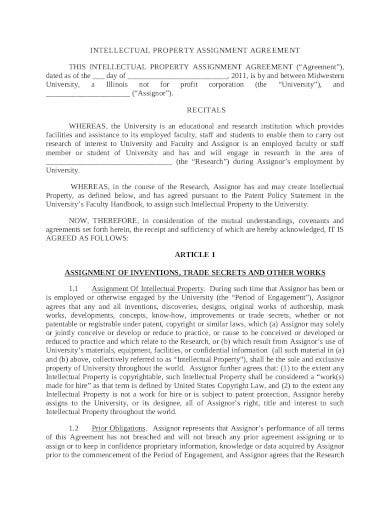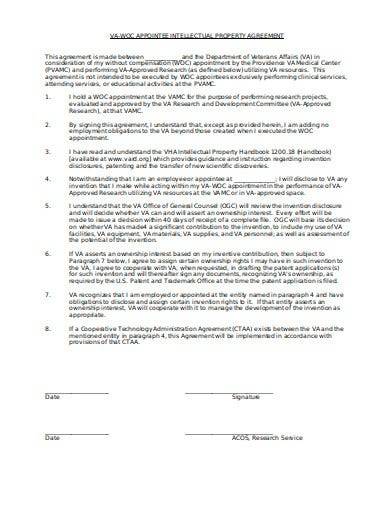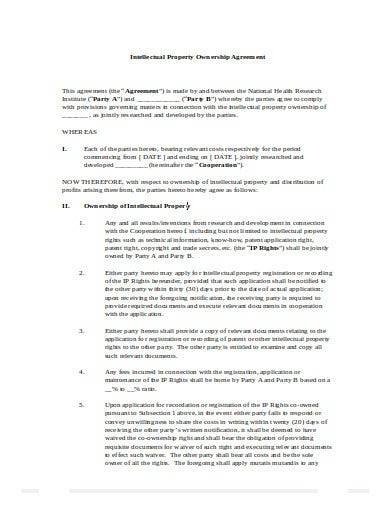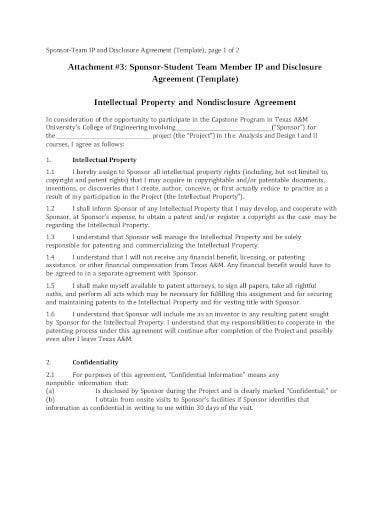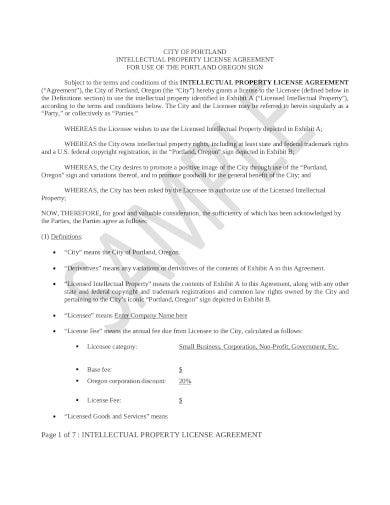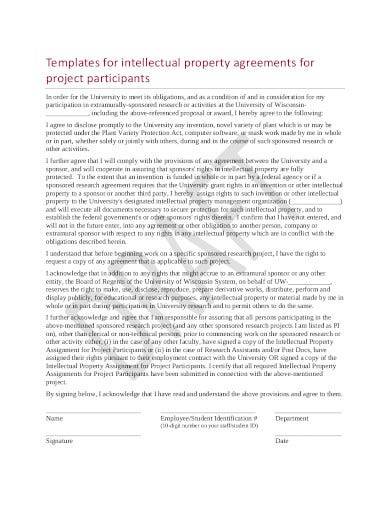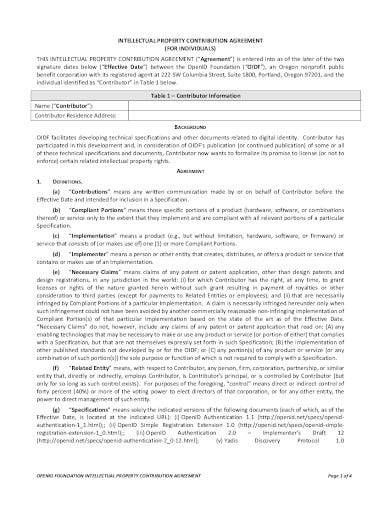The case of Robin Thicke, Pharell Williams, and T.I.’s “Blurred Lines” against Marvin Gaye’s “Got to Give It Up” is something that everyone will remember as tragic, especially in the music scene. This is only one case of the thousands of intellectual property-related situations in history. This shows that your works and ideas are precious, and should you let anyone use it, you should have a reliable intellectual property agreement to back you up. This protects every party from a costly dispute and ensures that everyone knows their responsibilities during the transaction. Learn more about this below.
FREE 10+ Intellectual Property Agreement Samples
1. Intellectual Property Agreement Template
2. Intellectual Property Assignment Agreement
3. Appointee Intellectual Property Agreement
4. Intellectual Property Ownership Agreement
5. Employees Intellectual Property Agreement
6. Intellectual Property Assignment Agreement Template
7. Intellectual Property and Nondisclosure Agreement
8. Intellectual Property License Agreement
9. Sample Intellectual Property Assignment Agreement
10. Project Intellectual Property Agreement
11. Intellectual Property Contribution Agreement
What Is an Intellectual Property Agreement?
An intellectual property agreement gives a third party the right to use your patented, trademarked, or copyrighted property for a fee or a royalty. This agreement specifies which parts or functions of your property your client or customer may use and their corresponding limitations. This also states under what misconducts or prohibited actions can you deny them control over your work.
Different Types of Intellectual Property
According to the Business and I.P. Centre, it’s important to protect your intellectual property because it’s more than just keeping a specific idea, goods, or devices under covers. It’s also guarding a valuable asset that contributes to your competitive stance in the market. Having your unique idea stolen from you and used or imitated by a third party for their own gain puts you at great risk. Putting a stamp on your work gives you the sole responsibility and control over what’s yours.
To help identify them, here are four types of intellectual properties:
1. Copyright. Copyright relates to original works such as written compositions, illustrations, designs, and music. This gives the owners the right to control their work’s reproduction, distribution, and adaptation, among others.
2. Trademark. A trademark’s role is to protect a text, logo, symbol, name, color scheme, and even smell. It safeguards not only a single type of products or materials but an entire line of good, including its processes.
3. Patent. A patent protects an original idea or process—something no one has ever thought of before. It prevents a person or a group’s work from being copied, redistributed, or sold without their consent.
4. Trade secrets. Trade secrets are matters that are confidential in a business or company. These can include processes, formula, materials, project plans, and strategies exclusive to their organization. This is why companies make their employee sign a non-disclosure agreement to prevent any information leak.
How to Make an Intellectual Property Agreement
If you’re looking for a way to make an intellectual property agreement, here are some steps that you can follow:
1. Detail the Agreement Terms
Your agreement’s terms should be detailed and clear as much as possible. Do that by removing ambiguous terms or complex words or expressions that require complicated interpretation. When you start to draft your agreement, begin by making a layout of your document’s parts. Identify the different sections and matters that you need to address. From there on, fill in the details or necessary information that every party should know. Review your business agreement thoroughly to ensure that you have everything you need without being complex or vague. Keep your agreement simple and comprehensive so the people reading the document can understand its content right away.
2. Specify Restrictions
Because this agreement focuses on letting another party utilize your intellectual property, this should emphasize the restrictions when handling your ownership. It’s not easy to entrust what you’ve worked hard to accomplish for many years. Through the agreement, state the scope of your material’s usage. For example, suppose you’re selling a software plan system. In that case, you might allow your user to explore the extent of the program’s functions but disallow copying its format or using it for illegal purposes. This works the same with a website’s user service agreement where they can use the site’s features unless it inflicts harm or incites malice against other users.
3. Lay the Payment Terms
Your agreement should include the payment terms and the payment schedule to ensure that the party obtaining the licensed material fulfills their obligations. Without this clause in your document, there’s a huge possibility that a conflict will arise during your partnership. In business, contract-related disputes have the power to stain your brand. Address all financial matters on your payment terms, including the price quotation or the total product amount. You might also want to include the maintenance fees if it’s applicable. This way, whenever a misunderstanding occurs regarding the payment, you can always refer to the agreement.
4. Discuss the Contract Termination
Contract termination is a natural occurrence in business partnerships and transactions. Just like every unfortunate thing in the world, it’s something that your agreement should tackle head-on. When you draft your contract termination section, address what issues or circumstances make termination an apparent choice. You should also point out that outside the mentioned situations, backing out from the agreement is prohibited until the agreement reaches its expiration period.
FAQs
What are the different types of intellectual property licenses?
The different types of intellectual property licenses are exclusive licenses, sole licenses, and non-exclusive licenses.
What is an intellectual property assignment?
An intellectual property assignment is transferring the property owner’s rights to a receiver. The owner may assign a full or a part of his rights for a sum or royalty, but unlike intellectual property agreements, the owner will have no control of how the receiver will use their property.
Which things are you not allowed to patent?
These are some things that you’re not allowed to legally patent:
- Mathematical formula
- Discovery of living things
- Laws of nature
- Abstract idea
- An already claimed invention
It’s only right that you establish a claim on your intellectual properties as they are the brainchild of your ideas. They’re a testament to your hard work, and they’re your unique advantage in a market full of similar goods. You have something new to offer, and people will come flocking at you to see what you have. An intellectual property agreement allows you to let people use your work and let you gain something from it without complications. We have a wide array of agreement templates that you can use for this purpose. Download now!
Related Posts
FREE 10+ Draft Agreement Samples in MS Word | Google Docs | Apple Pages | PDF
FREE 10+ Financial Agreement Samples in PDF
FREE 10+ Equity Agreement Samples In MS Word | Google Docs | Apple Pages | PDF
Agreement Between Two Parties For Money
Shop Rental Agreement
Deed of Assignment
Agreement for Labour Contract
Agreement Format
Teacher Agreement Contract Samples & Templates
Car Rental Agreement Samples & Templates
Vehicle Sales Agreement Samples & Templates
FREE 10+ Sample Indemnification Agreement Templates in PDF
FREE 10+ Fundraising Agreement Samples in MS Word | Pages | Google Docs | PDF
FREE 10+ Co-Branding Agreement Samples [ Partnership, License, Product ]
FREE 8+ Independent Agreement Templates in PDF | MS Word


